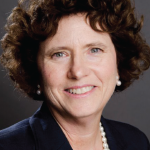The ACR is a single entity made stronger by the sum of its member constituents—physicians and allied health professionals—and our shared commitment to improving care for patients living with rheumatic and autoimmune diseases. As the rheumatology practice setting becomes more varied, the multidisciplinary team has become more important. The fact that the ACR membership comprises rheumatologists and rheumatology professionals from nearly two dozen disciplines has inspired the Association of Rheumatology Health Professionals (ARHP) president, Pamela Degotardi, PhD, and I to co-write this column to demonstrate the importance of collaboration.
Multidisciplinary care is a growing and significant trend in medicine that has also become increasingly more important to the ACR. There is greater recognition that healthcare can be delivered best by a team of people with varied expertise and approaches. Likewise, our organizational collective can also be developed to its full potential by employing an interdisciplinary approach. Over the past year the staff and volunteer leadership have made a concerted effort to integrate the activities of the ACR and the ARHP to capitalize on our combined strengths and benefit from the perspectives each group represents. Tangible benefits have been realized in almost every departmental area as a result of these joint efforts, which emphasize the ACR’s interdisciplinary outlook.
If our most recent endeavors are an indication, a multidisciplinary organization representing all rheumatology healthcare professionals will even more successfully serve us all.
Success Through Collaboration
The ACR and the ARHP have joined forces in our advocacy activities on Capitol Hill with great success. Through this collaboration we have strengthened our ability to lobby and advocate for our individual and collective interests. Our efforts in lobbying have also been helped by the inclusion of patients in our Hill visits, made possible by the recruitment efforts of both rheumatologists and rheumatology health professionals. Following an interdisciplinary model, our activism is effective and influential because we represent varied groups with differing views and our advocates include patients, healthcare professionals, and physicians.
The current iteration of the Government Affairs Committee (GAC), which spearheads our activity on Capitol Hill, encompasses the former ACR and ARHP committees of the same name. The combined committee is stronger than its predecessors because the group is now one unit with a single voice. GAC is also notable in its level of ARHP representation, which is the largest of any ACR/ARHP volunteer committee. Similarly, the former ACR and ARHP Audio Visual Aids Subcommittees are now joined under a single committee banner, resulting in a combined slide competition and a more comprehensive slide collection that will be available through the Rheumatology Image Bank (coming in October).
Another example of a winning collaboration is the popular nurse practitioner/physician assistant (NP/PA) rheumatology training program. In response to requests from physicians, the NP/PA rheumatology training program came to fruition under the leadership of a joint committee of ACR and ARHP representatives. Launched in December of 2008, this modular education tool has become a successful program valued by participants and by physicians, who see it as an important staff training device. The NP/PA editorial team consisted of nurse practitioners, physician assistants, and physicians. The variety of perspectives that contributed to the design and implementation of the NP/PA training modules was a major factor in the success and significance of the program.
The educational line-up at the 2009 State-of-the-Art Clinical Symposium in Chicago, Ill., also demonstrates the successful execution of our multidisciplinary organizational approach. A variety of educational programming was offered during the weekend event. Those activities included an ARHP advanced practice skills training course, the Committee on Rheumatologic Care’s practice management check-up, a training course developed to meet the educational needs of invited fellows, and lectures on the latest developments in rheumatology by key opinion leaders. Educational content of this scope and breadth could not have been achieved without a deliberate effort and an interdisciplinary process.
Over the past year the staff and volunteer leadership have made a concerted effort to integrate the activities of the ACR and the ARHP to capitalize on our combined strengths and benefit from the perspectives each group represents.
Strategic Approach to Working Together
Two key components in interdisciplinary planning are representation and exposure. To this end, ARHP members with different areas of expertise are often appointed to serve on the ACR planning committees. Representation by multiple ARHP members with different specialties is beneficial because, while the ARHP has been designed to meet the needs of allied health professionals, its membership should not be viewed as a monolithic group. The educational needs, professional concerns, and patient care experiences of a nurse practitioner will differ from those of a physical therapist or a physician assistant. Therefore, when we vary and expand the contributions of ARHP members on ACR committees, we all—including our patients—benefit from the exposure. Conversely, ACR members are also represented on ARHP committees to our mutual advantage. One example is the addition of a physician representative to the ARHP’s annual meeting planning committee.
A further illustration of the potential benefits of continued and thoughtful collaboration is the growth and expansion of the scientific journal publications. In 2000, both Arthritis & Rheumatism (A&R) and Arthritis Care & Research (AC&R) came under the governance of the Committee on Journal Publications (CJP)—a committee with almost equal representation by ACR and ARHP members. In fact, successful collaboration and unified leadership by the CJP over the last nine years has ushered AC&R to its current level of growth and acclaim.
We cannot overstate the value of combining our resources and talents to our best advantage rather than pursuing projects and activities as separate entities. As we engage in strategic planning we will continue to investigate new ways of tactically involving our membership for optimal impact. In fact, our strategic planning efforts are being developed within a multidisciplinary context and will hopefully shepherd a unified organization to an even brighter future. If our most recent endeavors are an indication, a multidisciplinary organization representing all rheumatology healthcare professionals will even more successfully serve us all—and therein lies the greatest benefit.
Dr. Gabriel is president of the ACR. Contact her via e-mail at [email protected]. Dr. Degotardi is president of the ARHP.


